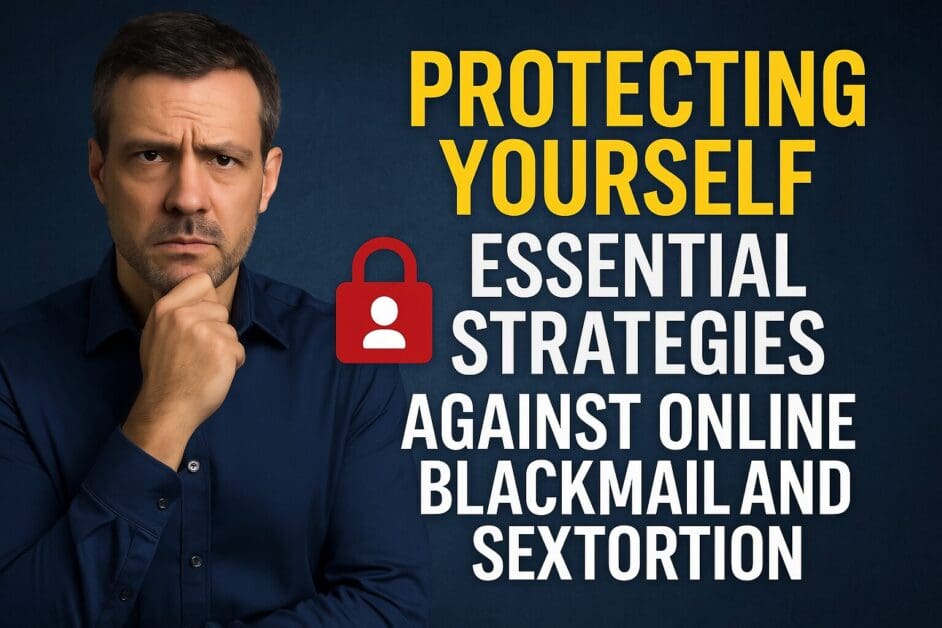Online blackmail and sextortion are becoming disturbingly common, affecting people from all walks of life. If you’ve found yourself thinking, “someone is blackmailing me online,” you’re not alone. These manipulative threats can escalate quickly and have lasting emotional, reputational, and financial consequences if not handled the right way.
Table of Contents
Understanding Online Blackmailing
Online blackmail, often referred to as sextortion or digital extortion, involves a person threatening to reveal private, personal, or embarrassing information unless demands—often financial—are met. Victims are commonly told that their private photos, conversations, or videos will be exposed unless they comply.
What Triggers Online Blackmail?
The root cause is often oversharing on social media, falling into online romance scams, or mistakenly trusting someone in private conversations. In many cases, the blackmailer gains access to:
- Private images or videos
- Intimate chats
- Hacked accounts and data
Scenarios may include someone saying, “someone is blackmailing me with my photos” or even worse, “someone is blackmailing me with my videos.”
Common Threats Victims Receive
Once the blackmailer has compromising content, the threats begin:
- “Pay me $500 or I’ll share this with your friends.”
- “If you don’t respond, your video goes public.”
- “I know your family members and I’ll send them everything.”
These threats are designed to incite fear and urgency, leading to hasty decisions by the victim.
When Victims Don’t Seek Help
In most cases, victims freeze or try to handle it on their own. They delete their accounts, change usernames, or comply with the demands—none of which actually solve the problem. Many victims search phrases like “how to stop someone from blackmailing me” or “what to do if being blackmailed” but find vague or unhelpful information online.
Why Reporting to Authorities Is Important—But Not Enough
While it’s crucial to report online blackmail to law enforcement, it’s important to understand that authorities often take time to act and may not be equipped to intervene immediately. In urgent cases, waiting can escalate the threat.
The Danger of Paying the Blackmailer
Once a victim complies and pays, the demands don’t stop—they grow. The blackmailer knows you’re vulnerable and will keep returning with more threats, higher demands, and wider exposure.
How a Blackmail Rescue Expert Can Help
If you’re thinking, “someone is blackmailing me online,” it’s time to seek professional intervention. Blackmail Rescue Experts specializes in handling sextortion, online blackmail, and cyber extortion cases with urgency and discretion.
Their team:
- Traces the identity of blackmailers
- Assists with evidence collection
- Coordinates takedown of exposed content
- Offers full guidance on legal action and digital protection
They have successfully handled cases for victims who initially searched “someone is blackmailing me with my photos” or wanted to “report online blackmail” and got no immediate help elsewhere.
How to Respond to Online Blackmail
Step 1: Preserve All Evidence
- Take screenshots of chats, usernames, profiles
- Save any emails or payment requests
Step 2: Do Not Respond to Threats
- Never negotiate or pay
- Block the blackmailer on all platforms
Step 3: Contact a Professional
- Hire a Blackmail Rescue Expert
- Share your case details securely
- Let them take immediate action
Frequently Asked Questions
What should I do if someone is blackmailing me online?
If you suspect you’re being blackmailed, do not engage further with the blackmailer. Avoid paying, avoid negotiating. Instead, preserve all evidence (screenshots, chat history, transaction requests) and contact professionals like who are trained in dealing with these cases.
Can online blackmail be stopped permanently?
Yes, with the right help. While blackmailers often hide behind fake profiles or VPNs, experts in digital forensics can uncover their identity, stop the threats, and remove damaging content. Acting early is critical.

